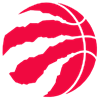We're now past the halfway point in this tour through big-league breakout candidates, and for whatever reason, I found this week's installment to be the most difficult so far, simply due to the fact that most of the clubs are pretty set, or pretty barren in terms of talent on the cusp. It also might have something to do with the fact that the division saw more than its fair share of big breakouts last season, as guys like Bryan Reynolds and Brandon Woodruff made the difference in plenty of 2019 fantasy races.
For prior columns in the series, click here for the AL East, NL East, and AL Central.
Now, let's take a look at the NL Central:
Cubs
Shallow: Nico Hoerner
Had the season started on time as per usual, Hoerner might have begun the season back at Triple-A, a circumstance that kept his cost in check in February and March despite his strong debut in 2019. Now, with a compacted schedule and expanded rosters on the table, he could wind up as the Cubs' starting second baseman for the entire season more or less. The 22-year-old's hit tool is is best selling point right now – in fact, it might be too good, as his reliance on his contact ability led him to offer at too many pitches out of the zone in the majors – but if he can tighten his plate discipline and add a bit more loft to his swing,
We're now past the halfway point in this tour through big-league breakout candidates, and for whatever reason, I found this week's installment to be the most difficult so far, simply due to the fact that most of the clubs are pretty set, or pretty barren in terms of talent on the cusp. It also might have something to do with the fact that the division saw more than its fair share of big breakouts last season, as guys like Bryan Reynolds and Brandon Woodruff made the difference in plenty of 2019 fantasy races.
For prior columns in the series, click here for the AL East, NL East, and AL Central.
Now, let's take a look at the NL Central:
Cubs
Shallow: Nico Hoerner
Had the season started on time as per usual, Hoerner might have begun the season back at Triple-A, a circumstance that kept his cost in check in February and March despite his strong debut in 2019. Now, with a compacted schedule and expanded rosters on the table, he could wind up as the Cubs' starting second baseman for the entire season more or less. The 22-year-old's hit tool is is best selling point right now – in fact, it might be too good, as his reliance on his contact ability led him to offer at too many pitches out of the zone in the majors – but if he can tighten his plate discipline and add a bit more loft to his swing, he could emerge as the next Jeff McNeil.
Deep: Victor Caratini
Willson Contreras is the unquestioned starter behind the plate for the Cubs right now, but Caratini showed enough with his bat that he's begun to get work backing up Anthony Rizzo at first base as well as caddying for Contreras, and it's possible his utility profile expands further as Caratini was a third baseman in college. The real play here is in the long term. Contreras is two more years away from free agency, but his salary figures to take a big jump in arbitration next winter. If he's coming off another season more like 2018 than 2019, the organization could easily decide his inconsistency isn't worth the price tag – this is, after all, a front office waffling on paying Kris Bryant – handing the starting job to Caratini. The 26-year-old has a higher offensive ceiling that you might expect, too. He's been OK in the majors, but his .342/.393/.558 line with 10 homers in 83 games for Triple-A Iowa in 2017 stands out.
Reds
Shallow: Robert Stephenson
If Raisel Iglesias finally spits the bit in the ninth inning, it's generally assumed Michael Lorenzen is the next man up, but I'm not sure that's true, especially if the Reds try to take advantage of the "two-way player" provision in the new roster rules. To get Lorenzen to qualify in 2021 as a position player who's allowed to pitch whenever the team wants him to, they won't be able to limit him solely to closing opportunities. Cincy has plenty of other options for high-leverage work as well, with Stephenson perhaps at the top of the list after his remarkable evolution at the end of last season under the tutelage of pitching coach Derek Johnson. Of course, all this assumes the team starts looking for a new closer, but closer volatility is nothing new, and Iglesias was shaky in 2019. If there's an opening, though, I'll take my chances with Stephenson and his wipeout slider.
Deep: Tyler Mahle
Mahle is starting to turn into one of those guys I just can't seem to quit, but he always seems so close to breaking out. Last year, he added a split-finger pitch to his arsenal in a search for a true out pitch; this spring he was focused on sharpening his slider. His control took a big step forward in 2019 as he stopped nibbling so much, so the last piece of the puzzle is keeping the ball in the park just a little more often. Mahle heads into this campaign as the sixth starter, but that's a role that will get plenty of work in a compacted schedule, and there should be a job for him in 2021 with both Trevor Bauer and Anthony DeSclafani headed for free agency. Really, though, I'm betting on the talent here. Mahle may never be an ace, but he's better than he's shown so far, and he has the stuff to be a solid mid-rotation contributor.
Brewers
Shallow: Luis Urias
Picked up from the Padres in the offseason, Urias should probably be the Brewers' Opening Day shortstop, whenever Opening Day gets here. That's no sure thing, though. The club is comfortable with Orlando Arcia's glove at the position, and a spring wrist injury prevented Urias from demonstrating he was the better option. I'm not really looking at shortstop as the easiest path to a regular spot in the lineup for the 22-year-old, though. For some reason, the club has decided it can get away with mixing and matching three mediocre utility players at third base. Eric Sogard has a great run in Toronto last year, but he couldn't repeat it in Tampa and he won't repeat it in Milwaukee. Jedd Gyorko has seen his numbers slide for a couple years now, while Brock Holt's offensive contributions have always been BABIP-dependent. If you're going to carry a weak stick at one position anyway, you might have well go with the best defensive arrangement, and that could well be Arcia at short and Urias at third rather than Urias at short and a hot mess at the hot corner.
Deep: Corbin Burnes
OK, yes, the 8.82 ERA last year was very bad, but Burnes still struck out 70 batters in 49 innings. The 25-year-old was maybe the biggest victim of last year's happy fun ball, surrendering 17 homers (that's a 3.1 HR/9!) as his command within the zone left a lot to be desired. If the right-hander can just stop leaving pitches right over the heart of the plate, he has the stuff to not only lock up a rotation spot, but blossom the way Brandon Woodruff did in 2019, or perhaps soar to even greater heights. That's not hyperbole. Burnes was touching 94 mph this spring – with his slider. That's Jacob deGrom levels of silly. He absolutely has an ace-quality arsenal, he just needs to harness it better. In a deep fantasy league, that's the kind of upside you want to gamble on.
Pirates
Shallow: Jared Oliva
The Pirates' outfield seems reasonably set with Bryan Reynolds, Gregory Polanco and Jarrod Dyson, but of that trio, only Reynolds's spot is really safe. Polanco has been missed significant time due to injuries two of the last three years, and if he stays healthy and productive, that might just make him trade bait. Dyson's a 35-year-old who profiles best as a fourth outfielder on a contender, which could also make him a movable asset. If a spot opens up, Oliva appears to be next in line, and his fantasy contributions could be similar to Dyson's – he hasn't shown much power in the minors, but he makes contact and racks up steals.
Deep: Cole Tucker
Kevin Newman eventually won the shortstop battle last year, but he hardly did so decisively. His little power surge seemed entirely the product of the rabbit ball, and without it he seems more like a utility player than a dependable regular, and his glove is stretched at shortstop. The Bucs gave Tucker a shot last season before they turned to Newman, and while his offense remains far behind his defense – he has yet to hit above .261 in the high minors – Tucker is only 23 and should improve, even if his upside is basically peak Orlando Arcia. Pittsburgh could also flip Adam Frazier, opening up second base for Newman and thus shortstop for Tucker. Like Oliva, he could wind up being a nice source of bonus steals in 2020.
Cardinals
Shallow: Daniel Ponce de Leon
Sixth starters and swing men are likely to be very important guys this season, and Ponce de Leon could be one of the best of the bunch. The Cards really like him, and while he may not feature the overall arsenal to be an ace, he continues to make improvements. The 28-year-old really is only one quality breaking pitch away from being a dependable mid-rotation guy, as his fastball has become plus – he just needs to find a way to keep hitters from sitting on it all the time. PDL also pitches for an organization with a track record of getting the most out of its arms. If he can make those final adjustments and refinements, he could provide solid value.
Deep: Alex Reyes
It's entirely possible Reyes is done, and injuries have once again sabotaged another promising pitching career. It's hard to give up on a guy with this kind of stuff, though – even in a 'disappointing' spring, he fanned nine batters in 4.1 innings (in other words, nine of his 13 outs came via K). What Reyes really needs is work, and repetition, so he can hopefully get his mechanics in order and find the plate with some consistency. He's still only 25, and still has a chance to be an ace with three plus pitches. He could work his way back into the rotation plans, or find a home in the bullpen, or never pitch in another big-league game again. As a late-round dart or reserve pickup, though, the floor is irrelevant. It's ceiling you want, and Reyes reaching his sky-high upside still remains a tantalizing possibility.





































